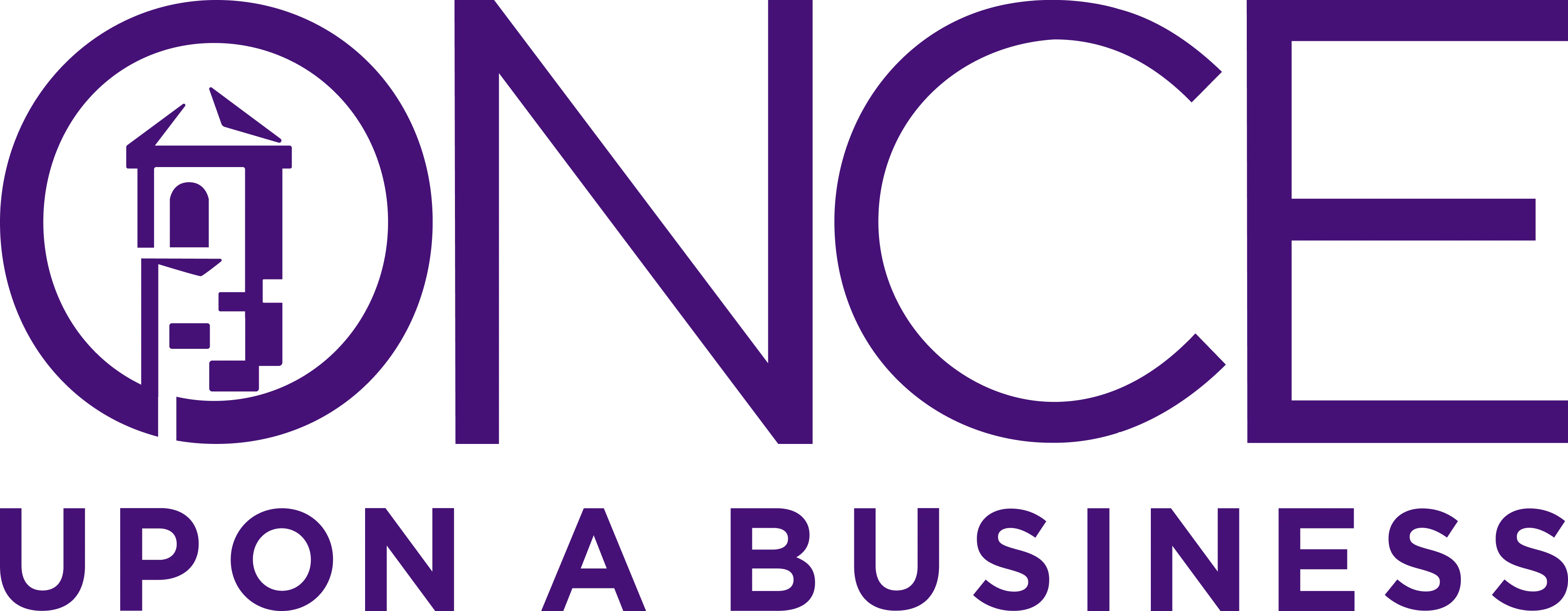
Your client's sales team just lost another "hot" lead. The prospect seemed interested, engaged in three separate conversations, then vanished. Meanwhile, a "cold" inquiry from six months ago suddenly called asking to move forward immediately—and nobody remembers who they are or what they discussed.
Sound familiar? This is what happens when businesses rely on manual lead management instead of systematic automation. Sales teams waste time chasing lukewarm prospects while genuinely interested buyers slip through the cracks. The result? Unpredictable revenue, frustrated sales reps, and missed growth opportunities.
The solution isn't better sales training or more follow-up calls. It's The Fairy Tale Funnel—an automated engine that scores every lead's buying intent, nurtures prospects through a systematic journey, and ensures your client's sales team only engages when someone is genuinely ready to buy.
This system transforms your agency positioning immediately. You're no longer just setting up CRM software; you're architecting an intelligent revenue engine that automatically identifies the hottest prospects and guides them toward purchase decisions. The difference between manual lead management and systematic automation is the difference between hoping for sales and engineering them.
Why Most Sales Pipelines Fail to Convert
Before we build the engine, we need to understand why traditional sales approaches create the problems your clients are experiencing.
The Equal Attention Trap
What it looks like: Sales teams treat every lead the same way. Whether someone downloads a single blog post or visits the pricing page five times, they receive identical follow-up sequences and sales attention.
Why it fails: Not all leads are created equal. Someone who attended a webinar, downloaded a case study, and visited your pricing page is fundamentally different from someone who filled out a contact form once and never engaged again. Treating them identically wastes time and creates poor experiences for both segments.
The cost: Sales reps spend 80% of their time on leads that will never buy, while genuinely interested prospects receive generic, delayed attention that kills their momentum.
The Manual Handoff Problem
What it looks like: Marketing generates leads and "throws them over the wall" to sales. There's no systematic way to determine when someone is sales-ready, so reps either call too early (annoying cold prospects) or too late (after interest has cooled).
Why it fails: Without automated scoring and nurturing, the handoff from marketing to sales is based on guesswork rather than behavioral signals. This creates friction for prospects who aren't ready and missed opportunities for those who are.
The cost: Poor timing destroys conversion rates. Prospects who could have been customers are lost because they were contacted at the wrong moment in their buying journey.
The Follow-Up Failure
What it looks like: After initial contact, follow-up is inconsistent and manual. Some prospects get multiple calls, others are forgotten entirely. There's no systematic way to re-engage leads who went cold or nurture those who need more time.
Why it fails: Human memory and manual processes don't scale. As lead volume grows, more opportunities fall through the cracks, and sales performance becomes dependent on individual rep organization rather than systematic process.
The cost: Studies show that 80% of sales require five follow-up contacts, but most sales teams give up after two. This represents massive lost revenue that could be captured with proper automation.
The Lead Scoring Engine: Separating Princes from Pretenders
Lead scoring is how you stop wasting time on tire-kickers and focus energy on genuine buyers. It assigns numerical values to prospect behaviors and attributes, allowing automation to prioritize the highest-potential opportunities.
Explicit Scoring: The Royal Decree
This measures how well prospects fit your client's ideal customer profile based on information they provide or that is publicly available.
High-Priority Scoring (15-20 points):
- Job Title: CEO, Founder, Owner, President
- Company Size: Within ideal range (e.g., 10-100 employees)
- Industry: Primary target verticals
- Geographic Location: Service area matches
- Budget Authority: Decision-maker or budget holder
Low-Priority Scoring (1-5 points):
- Job Title: Assistant, Intern, Student
- Company Size: Too small or too large for ideal service
- Email Domain: Generic addresses (@gmail, @yahoo)
- Geographic Location: Outside service area
- Role: Researcher without buying authority
Implicit Scoring: The Trail of Breadcrumbs
This measures engagement level and buying intent based on prospect behavior and actions.
High-Priority Scoring (15-20 points):
- Pricing page visits (especially multiple times)
- Case study downloads
- Demo or consultation requests
- Proposal or quote form submissions
- High email engagement over time
Medium-Priority Scoring (5-10 points):
- Webinar attendance
- Multiple blog post reads
- Resource downloads (whitepapers, guides)
- Social media engagement
- Referral source quality
Low-Priority Scoring (1-3 points):
- Single email opens
- Basic website visits
- Social media follows
- Newsletter subscriptions
- Single content downloads
Negative Scoring (-5 to -10 points):
- Careers page visits (job seekers, not buyers)
- Competitor company domains
- Unsubscribe actions
- Spam complaints
- Multiple unqualified inquiries
Contact Lifecycle Automation: From Subscribers to Sales Opportunities
Now that we've established how to score leads, we need to understand how those scores automatically trigger lifecycle changes and determine the type of nurturing each contact receives. This is where lead scoring transforms from theory into systematic action.
The Three Critical Contact Types
Subscribers (0-24 points):
These are early-stage contacts who have shown minimal engagement. They've typically performed only basic actions like subscribing to a newsletter, following social media, or making a single website visit.
Automated actions for Subscribers:
- Educational nurture sequences focused on problem awareness
- General industry insights and tips
- Invitations to low-commitment content (blog posts, social content)
- Quarterly re-engagement campaigns
- No sales team involvement
Marketing Qualified Leads - MQLs (25-74 points):
These contacts have demonstrated meaningful engagement and fit some ideal customer criteria, but aren't ready for direct sales outreach. They're actively researching solutions and consuming educational content.
Automated actions for MQLs:
- Solution-focused nurture sequences
- Case studies and success stories delivery
- Webinar and demo invitations
- Progressive profiling to gather more qualification data
- Behavior tracking for sales-readiness signals
- Marketing team monitoring and optimization
Sales Qualified Leads - SQLs (75+ points):
These contacts have demonstrated high engagement, strong fit, and buying intent. They've typically consumed bottom-of-funnel content, visited pricing pages multiple times, or directly requested sales contact.
Automated actions for SQLs:
- Immediate sales team notification with full engagement history
- Calendar link delivery for demo scheduling
- High-priority follow-up sequences
- Account-based nurturing focused on decision-making content
- Automatic CRM record creation with all behavioral data
Automatic Lifecycle Progression
The beauty of this system is that contacts automatically move between these categories based on their accumulated score and behavior patterns:
Upward Movement:
- When a Subscriber reaches 25 points, they automatically become an MQL
- When an MQL reaches 75 points, they automatically become an SQL
- Each transition triggers appropriate nurture sequence changes
- Sales team receives notifications only when SQL threshold is reached
Downward Movement (Score Decay):
- Inactive contacts lose points over time (typically 1-2 points per week of inactivity)
- SQLs who don't engage can drop back to MQL status
- MQLs can revert to Subscriber status if engagement ceases
- Different nurture sequences activate based on the contact's new status
Reactivation Protocols:
- Contacts dropping in score trigger re-engagement campaigns
- Different messaging based on their highest previous lifecycle stage
- Opportunity to update preferences or interests
- Automatic unsubscribe options for completely disengaged contacts
This systematic approach ensures that your client's sales team only receives genuinely qualified opportunities while marketing continues nurturing those who need more time or education.
Architecting the Fairy Tale Funnel: The Seven-Stage System
With lead scoring and lifecycle automation established, we can now build the complete pipeline system that guides prospects from initial awareness to closed deals. The Fairy Tale Funnel transforms traditional sales stages into an automated journey where prospects advance based on demonstrated interest and engagement rather than sales rep activity.
Unlike traditional pipelines that track what the sales team has done, this system tracks what prospects have experienced and automatically triggers the right actions at the right time. Each stage represents a specific level of buying intent and engagement, with automated nurturing designed to move prospects naturally toward the next level.
The Seven-Stage Automation Framework
Stage 1: Prospecting (0-25 points)
What happens: Initial awareness and interest generation through marketing activities.
Contact status: Subscriber
Engagement level: Basic interest or single interactions
Automated triggers:
- Welcome email series begins upon first engagement
- Lead source tracking automatically captures origin
- Basic demographic scoring applied based on available data
- Educational content delivery based on traffic source
System actions:
- Assign lead source and initial score
- Begin awareness-stage nurture sequence
- Track engagement patterns
- Alert marketing team to traffic source performance
Nurture focus: Problem education, industry insights, trust-building content
Stage 2: Lead Qualification (25-50 points)
What happens: Prospects demonstrate genuine interest through multiple engagements.
Contact status: Marketing Qualified Lead (MQL)
Engagement level: Active research and content consumption
Automated triggers:
- Score threshold reached through multiple content interactions
- Form submissions with business information
- Repeated website visits over defined timeframe
- Email engagement consistency
System actions:
- Upgrade to qualified lead status
- Begin solution-focused nurture sequence
- Increase content personalization
- Start behavioral tracking for buying signals
Nurture focus: Solution education, methodology explanations, competitive differentiation
Stage 3: Demo or Meeting (50-75 points)
What happens: High-scoring leads approach sales-readiness threshold.
Contact status: High-Value MQL (approaching SQL status)
Engagement level: Solution evaluation and comparison
Automated triggers:
- Progressive scoring through high-intent content consumption
- Multiple touchpoints with bottom-funnel content
- Pricing page visits or calculator usage
- Direct inquiry submissions
System actions:
- Deliver proof-focused content (case studies, ROI calculators)
- Send soft meeting invitations (webinar registrations, office hours)
- Increase email frequency with value-driven content
- Begin sales-readiness tracking
Nurture focus: Social proof, detailed case studies, ROI justification materials
Stage 4: Sales Qualified (75+ points)
What happens: Leads reach sales-ready threshold and receive direct outreach.
Contact status: Sales Qualified Lead (SQL)
Engagement level: Ready for sales conversation
Automated triggers:
- Score reaches 75+ point threshold
- High-intent actions (pricing page, case studies, direct contact requests)
- Multiple touchpoints in short timeframe
- Demo or consultation requests
System actions:
- Automatically send calendar link for demo scheduling
- Create immediate notification for sales rep with full lead history
- Begin meeting confirmation and reminder sequence
- If no response, trigger re-engagement campaign
No-show protocol:
- Automatic re-scheduling email within 2 hours
- Follow-up sequence over 7 days
- Score reduction for non-engagement
- Return to MQL nurture sequence if no response
Stage 5: Proposal (SQL + successful meeting)
What happens: Qualified prospects receive customized proposals after discovery calls.
Contact status: Sales Qualified Lead (Active Opportunity)
Engagement level: Active evaluation and decision-making
Manual trigger: Sales rep marks opportunity as "Proposal Requested" after successful meeting
System actions:
- Automatically create proposal preparation task for team
- Send proposal delivery confirmation sequence
- Begin proposal follow-up nurture (case studies, testimonials)
- Set automatic follow-up reminders for sales rep
Nurture focus: Decision support content, testimonials, implementation timelines
Stage 6: Negotiation and Commitment (Proposal sent + engagement)
What happens: Active discussions about terms, scope, and pricing.
Contact status: Active Opportunity (High-Priority)
Engagement level: Final decision phase
Automated triggers:
- Proposal viewed multiple times
- Follow-up meeting scheduled
- Questions or objections submitted
System actions:
- Send objection-handling resources automatically
- Provide negotiation support materials
- Create urgency-building follow-up sequence
- Alert sales rep to high engagement
Nurture focus: Objection handling, urgency creation, final proof points
Stage 7: Opportunity Won (Contract signed)
What happens: Deal closes and client onboarding begins.
Contact status: Customer
Engagement level: Implementation and success focus
Manual trigger: Sales rep marks deal as "Closed Won"
System actions:
- Automatically create onboarding tasks
- Send welcome sequence to new client
- Begin client success nurture track
- Update lead source ROI tracking
Nurture focus: Onboarding support, success metrics, expansion opportunities
Advanced Automation Rules
Re-engagement Protocols:
- Leads who score 40+ points but go inactive for 30 days automatically enter re-engagement sequence
- Different messages based on their highest engagement point
- Gradual score decay for inactive leads
- Option to unsubscribe or update preferences
Lead Routing Logic:
- Geographic territories automatically assign leads to correct sales rep
- Industry specialization routing for complex verticals
- Load balancing to distribute leads evenly among team
- Escalation rules for high-value opportunities
Nurture Track Branching:
- Different content sequences based on lead source
- Industry-specific nurture tracks
- Role-based content delivery (CEO vs. Manager messaging)
- Behavior-triggered sequence changes
FAQ: Advanced Pipeline Questions for Agency Owners
1. "How do I convince a client to implement all this automation when they're used to manual sales processes?"
Start with the pain points they already acknowledge. Say: "You mentioned your team spends most of their time on leads that don't close. This system ensures they only spend time on prospects who are actually ready to buy."
Show them the math: If their sales team currently converts 10% of leads with manual follow-up, automated lead scoring and nurturing typically improves that to 25-30%. That's not just process improvement—that's revenue multiplication with the same effort.
2. "This seems complex to set up. How do I make the implementation manageable for the client's team?"
Phase the rollout strategically. Start with basic lead scoring and simple automated sequences, then add complexity as the team sees results. The key is proving value quickly with simple automations before building sophisticated nurture tracks.
Most importantly, the system reduces complexity for the sales team. They get fewer, higher-quality leads with complete interaction history. It's actually simpler for them to use than manual processes.
3. "What if leads complain about receiving too many automated emails?"
Quality trumps quantity. Well-designed nurture sequences provide genuine value at each step—educational content, case studies, tools that help them solve problems. Prospects welcome helpful information; they complain about generic sales pitches.
Include clear preference centers and unsubscribe options. Someone who opts out wasn't going to buy anyway, and you've saved time by identifying that early rather than wasting sales effort.
4. "How do I measure the ROI of this system versus their current manual approach?"
Track three key metrics: lead-to-customer conversion rate improvement, average time to close reduction, and sales team productivity increase. Most properly implemented systems show 20-40% improvement in conversion rates within 90 days.
More importantly, measure predictability. Manual processes create feast-or-famine revenue cycles. Automated systems generate consistent, forecastable results that allow for better business planning.
5. "What happens if a high-scoring lead isn't actually qualified when the sales team calls them?"
This indicates scoring criteria need calibration, not system failure. Review which behaviors and attributes are receiving high scores and adjust based on actual conversion data. Good lead scoring improves over time as you refine the model.
Also ensure negative scoring is properly implemented. Someone with a high engagement score but negative qualification attributes (wrong industry, no budget authority) should be flagged for nurturing, not immediate sales contact.
From Reactive Sales to Systematic Revenue
Here's what most agencies miss about sales automation: A sales pipeline isn't a tracking system. It's a revenue prediction engine.
Traditional CRMs treat pipelines as glorified spreadsheets that track what sales reps have done. But prospects don't care about your internal milestones. They care about receiving the right information at the right time to make confident purchasing decisions.
The Fairy Tale Funnel recognizes that modern B2B buying is fundamentally about risk mitigation and value demonstration. Every prospect is asking: "Can I trust this company? Do they understand my problems? Have they solved this for others like me? Can I justify this investment?"
When your system automatically delivers the right content to answer these questions at precisely the moment prospects are ready to receive it, several things happen:
- Sales conversations become consultative instead of persuasive. Reps aren't pitching; they're diagnosing specific needs because the nurturing system has already built foundational trust and understanding.
- Conversion rates become predictable instead of hopeful. When you know that leads scoring 75+ points convert at 35%, you can accurately forecast revenue and resource needs.
- Pipeline velocity accelerates instead of stagnates. Automated nurturing keeps prospects engaged between human touchpoints, preventing the momentum loss that kills deals in manual systems.
- Sales team productivity multiplies instead of scales linearly. One rep can effectively manage 300+ leads because the system handles qualification, nurturing, and timing automatically.
- This isn't just better lead management. It's the difference between hoping for sales and systematically engineering them.
- Strategy without systems is a fairy tale. But systems that automatically deliver value, build relationships, and identify buying intent? That's how you write a different ending to your client's revenue story.
Stop Managing Leads, Start Engineering Revenue
You have a choice. You can continue being the agency that helps clients "optimize their sales process," or you can become the strategic partner who transforms their entire approach to systematic revenue generation.
The Fairy Tale Funnel framework gives you proprietary methodology that immediately elevates every client conversation. When prospects ask about CRM implementation, you don't talk about software features—you present systematic lead scoring, automated nurturing, and predictable revenue engineering.
When competitors offer "better lead management," you deliver "systematic conversion optimization." When they provide "sales automation," you architect "intelligent revenue engines." The conversation shifts from vendor comparison to strategic partnership, and strategic partnerships always win.
Your clients don't need another CRM setup. They need a systematic approach to converting interest into revenue that works whether they're present or not. The Fairy Tale Funnel is that system, and you're the only one who can implement it properly.
Stop hoping your clients' leads will convert. Start engineering their conversion with systematic precision.

Discover Your Happily Ever After
Subscribe to get weekly updates on how you can start handling departmental plot holes in your story!






